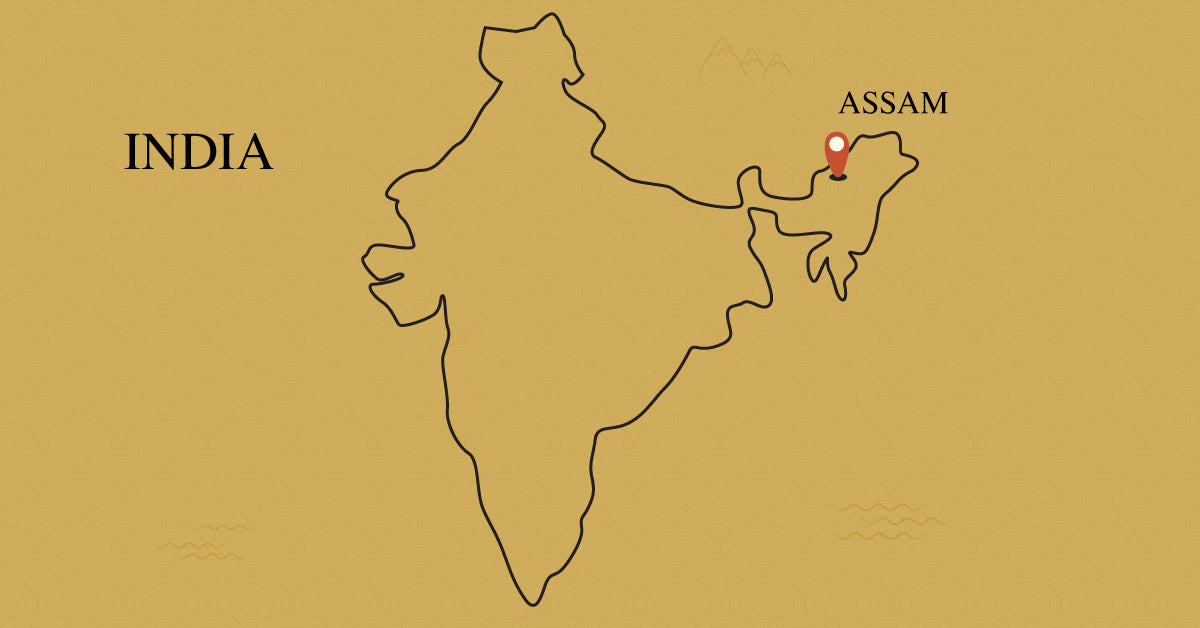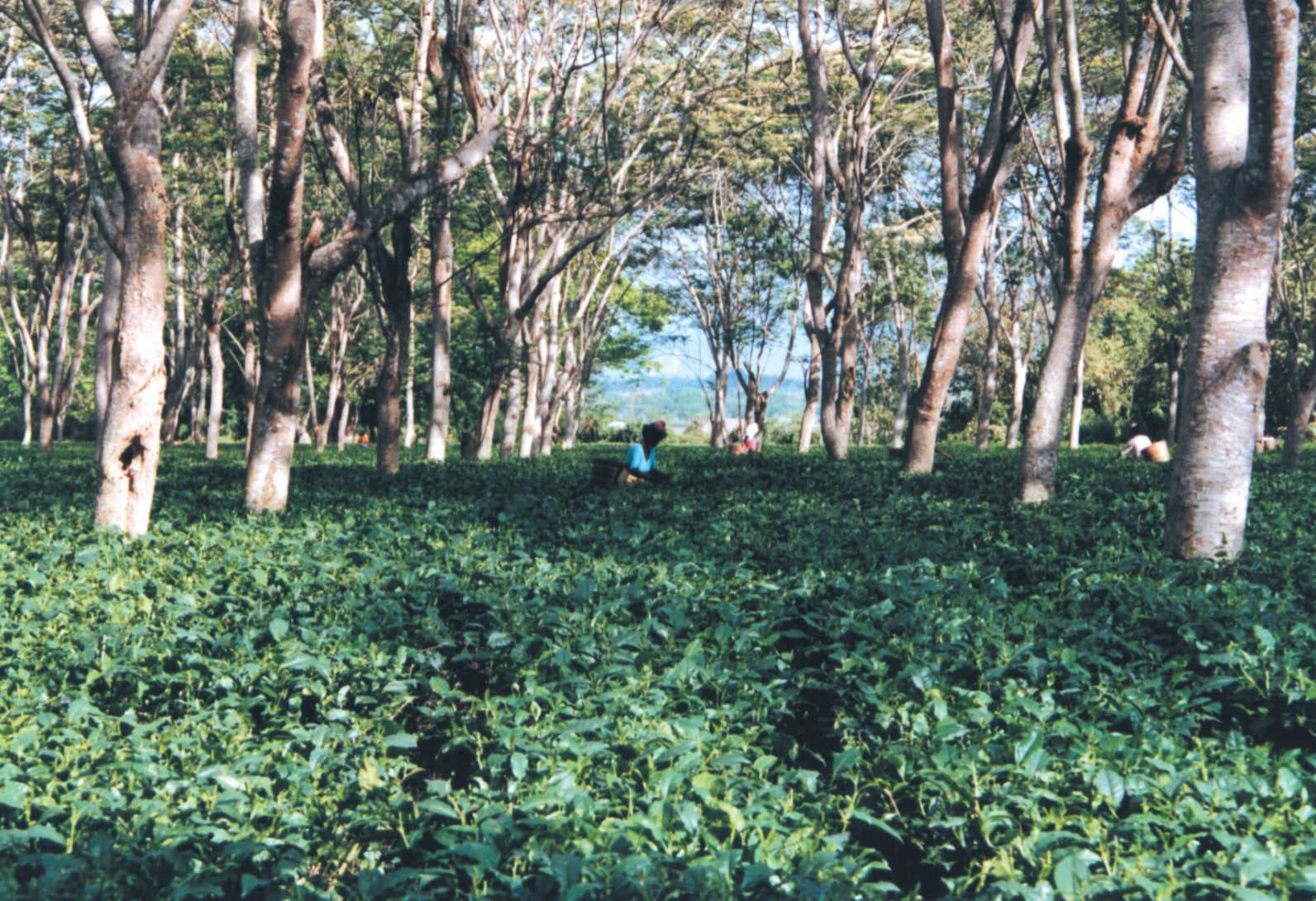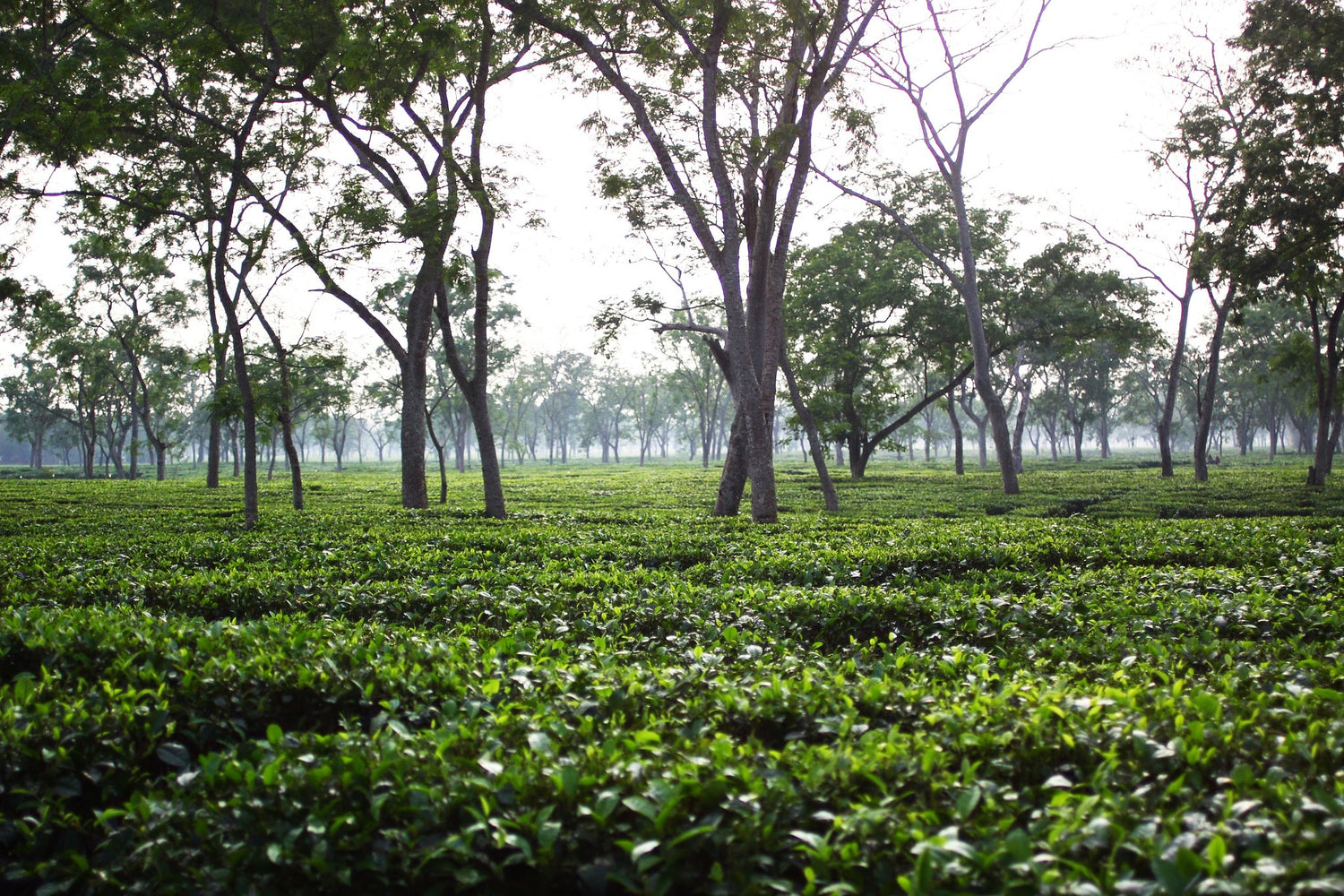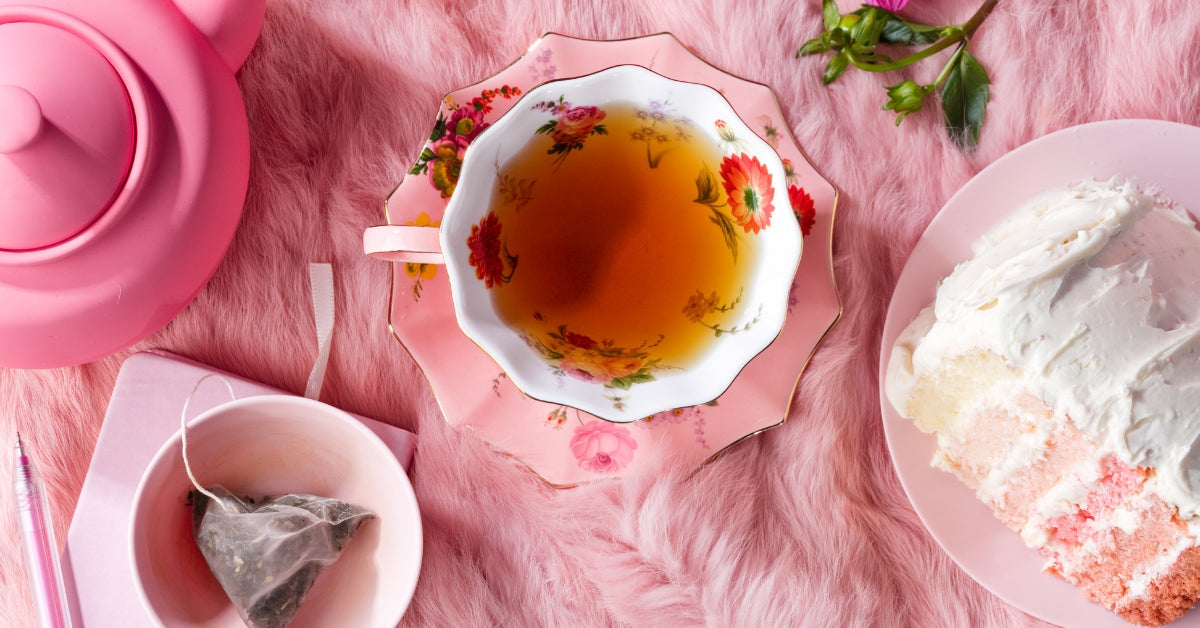The twirling brown leaves and golden tips of the world’s greatest Assam black teas yield lovely honey and malty flavors, a little like the maltiness of a good beer. Assams are also among the most assertive and brisk of the black teas. It’s no accident: The more quickly a tea is made, the brisker the body. And everything about Assam tea is fast. Continue on to learn more about the Assam tea region and the types of tea that are sourced from here.

Weather in the Assam Tea Region
Assam is India’s tea basket, a hothouse region that generates astonishing quantities of tea in just 6 weeks. Assam teas derive from Camellia sinensis var. assamica, a large-leafed variety of tea discovered only in the 1830s by British botanist-adventurer Charles Bruce. The British were quick to establish massive tea plantations, which today grow many different clones of the wild original.
In Assam’s subtropical conditions, the plants suffer for nothing, least of all water: Assam is one of the wettest places on the planet. The mighty Brahmaputra River cuts right down the Y-Shaped northeastern region, brimming with melted Himalayan snows and the region’s rains. The weather is fairly consistent: It either pours down rain or it is sunny and steamy. In the tropical moisture, the tea bushes draw from the rich, alluvial soil to generate thick, big leaves from May through June. In the humid air, tea makers have to rush to process the tea.
Assam Tea Making Processes
Assam makers both wither and oxidize these leaves in less time than just about any other good tea. In contrast with oolong leaves, which benefit from multistage withering, or Darjeelings, which require a hard withering, Assam leaves are limp and ready for rolling after just 14 hours. Withering time is also altered based on the quality of leaf. Better leaves are withered harder (given more withering time). Withering is carried out in two stages, one allows natural changes inside the leaf and the other reduces the moisture:
Assam makers roll and oxidize their teas quickly as well. While most use CTC (cut-tear-curl) machines, a few great Orthodox Assam makers apply traditional rolling to macerate the large, thick assamica leaves. In this process, first they roll the leaves in large batches in strong machines that apply plenty of pneumatic pressure. The leaf morsels that are the first to break down are considered the best and are called “fines”. The remaining leaves are run through a conical sieve called a dhool a second and third time. The thoroughly crushed leaves then oxidize very quickly, taking on strong, brisk flavors.
Orthodox Assams are the finest of the region, but they are risky to make. Indians drink primarily CTC tea, most often as chai, an intoxicating tea with spices and hot milk. But as a result, the domestic market for whole-leaf, Orthodox Assams is tiny. The best Orthodox Assams come from large estates that can afford to take a chance. Belying the usual assumptions about artisanal teas, some of Assam’s finest Orthodox teas come from these larger estates. These companies have helped improve the quality of the region’s teas dramatically in the last 50 years.

Golden Tip, CTC & Orthodox Assam Flavors
95% of the teas on the market in India are CTC teas. The aromas of CTC teas are simple and strong, with only a ghost of fruit flavors. The liquor is much darker, with much more body. Unlike Orthodox teas, CTC teas do not evolve and alter as you taste, but remain consistent. The flavor is comfortably stable but also somewhat predictable. For a pure CTC experience, try our CTC Assam.
A step up in flavor from the CTC would be our Irish Breakfast, a nice blend of broken orthodox Assams. This is a more complex brew than the CTC, but not as sweet as some of our tippier Assamese teas. Natural sweetness in tea comes from tips, or buds and the best Assam teas have some golden tips, both to give them more elegance and to drive up their price. We strive to offer a variety of tippy, orthodox teas for you to choose from. There is the Mokalbari East Broken that is sweeter and more complex than the Irish Breakfast, with lots of body or the Khongea Broken. My parents, Mike & Brigitte drink these teas most mornings.
Golden tip Assams are made of pure golden tips. Created within the last 30 years, these teas are so rare that they are only made on commission. We typically have to place an order before the harvest has even begun.
Golden tip Assams have less aroma from a very short withering. Unlike most Assams, golden tip Assams are barely rolled to preserve the delicate, expensive buds. The buds are then oxidized to a beautiful gold color when they are transferred to an oven to dry. If you’re interested in trying golden tip teas from the Assam tea region, we recommend trying our Mokalbari Golden Assam or Halmari Golden Tips.
Note to the reader: Each year, we see numerous samples from different Indian tea gardens. To this end, we may find that one garden's crop this year pales in comparison to last years, so we will find another whose tea piques our interest and palettes. Bearing this in mind, don't fret if you don't see your favorite Assam or Darjeeling garden from previous seasons, as the change in the estate means that we are committed to providing you with the best quality cup possible. You can see that we were impressed with Mokalbari East’s efforts this year.
India is an exciting country full of history and tradition. Our buyers always enjoy exploring the unique teas the region has to offer. Stay tuned as we explore the other tea growing regions of India. Read a few of our favorite posts below to continue learning about the exciting world of tea:





6 comments
Robert R. Britton
We enjoy the golden tip Assam. Different purchases have had variations in tasrte.
Now we know why. Thanks for the clarifying article.
We enjoy the golden tip Assam. Different purchases have had variations in tasrte.
Now we know why. Thanks for the clarifying article.
Mike Loeb
That’s an interesting point about the market for orthodox Assam teas. I had always assumed that the big factories took no interest in making fine orthodox tea, but as you suggest, it is only the Bigs that can afford to do so. Thank you for the nice article.
That’s an interesting point about the market for orthodox Assam teas. I had always assumed that the big factories took no interest in making fine orthodox tea, but as you suggest, it is only the Bigs that can afford to do so. Thank you for the nice article.
Nona Pontiff
Very interesting info on Assam tea.
I have been a fan of Harney and Sons CTC Assam for many years, but my last purchase of the product seemed different — the “granules” seemed smaller and the taste was slightly different. I would describe it as sharper/less smooth than previously. Just curious, have you changed the supplier or processor for your CTC Assam? Perhaps it’s just my imagination? :)
Very interesting info on Assam tea.
I have been a fan of Harney and Sons CTC Assam for many years, but my last purchase of the product seemed different — the “granules” seemed smaller and the taste was slightly different. I would describe it as sharper/less smooth than previously. Just curious, have you changed the supplier or processor for your CTC Assam? Perhaps it’s just my imagination? :)
Julie Seitz
Thanks very much for the information. It’s very thoughtful and helpful. Another reason to enjoy Harney and Sons Tea. Your commitment to educating your customers demonstrates integrity. Please keep us educated. Thank you!
Thanks very much for the information. It’s very thoughtful and helpful. Another reason to enjoy Harney and Sons Tea. Your commitment to educating your customers demonstrates integrity. Please keep us educated. Thank you!
Shelly Redl
This has been so interesting and informative. Thank you for providing information that will help a novice (have always loved tea, but have never been exposed to the kind of variety and selection of Harney) navigate the abundant choices. I am eager to explore on my next order!
This has been so interesting and informative. Thank you for providing information that will help a novice (have always loved tea, but have never been exposed to the kind of variety and selection of Harney) navigate the abundant choices. I am eager to explore on my next order!
Diane Davidson
I love what you have done by adding these knowledge articles about the Assam region, caffeine, etc. Keep them coming. Well done.
I love what you have done by adding these knowledge articles about the Assam region, caffeine, etc. Keep them coming. Well done.